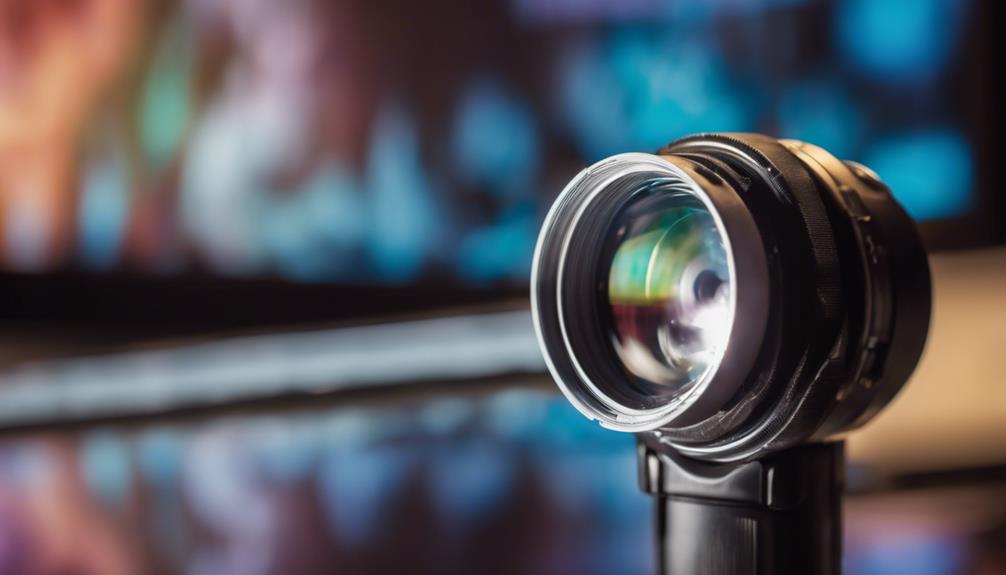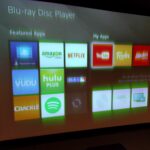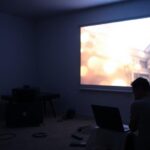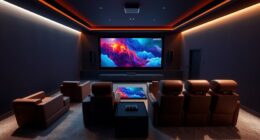If you're facing focus issues with your projector, start by adjusting the focus dial. Check the projector's distance from the screen; being too far or too close can cause blurriness. Regularly clean the lens to eliminate dust and smudges that affect clarity. Ascertain your screen quality is high, and control ambient light for better contrast. Adjust resolution settings to match your projector's native resolution. If the issue persists despite these efforts, it may signal deeper problems needing professional help. Keep exploring to discover more effective troubleshooting techniques and maintenance tips to enhance your projector's performance.
Key Takeaways
- Adjust the focus dial and verify lens alignment to correct initial blurriness.
- Ensure the projector is at the proper distance from the screen to maintain focus.
- Clean the projector lens regularly to eliminate dust and smudges affecting clarity.
- Manage ambient light and use a high-quality screen for improved image visibility.
Common Causes of Blurriness

Have you ever noticed blurriness in your projector images? This frustrating issue often stems from several common causes.
First, incorrect focus settings can lead to poor clarity. Make sure you adjust the focus wheel or digital controls to achieve a sharp image.
Additionally, the distance between your projector and the screen plays a vital role; if it's too far or too close, you might experience blurriness.
Another factor is the condition of your projector lens. Dust and fingerprints can obscure the image, so regularly clean the lens with a microfiber cloth.
Environmental elements also impact focus; excessive ambient light can wash out colors, while the quality of your screen surface can affect sharpness.
Lastly, be cautious with keystone correction. Overuse can distort edges, contributing to an overall blurry appearance. Instead, position your projector correctly to minimize the need for such digital adjustments.
Adjusting Resolution Settings
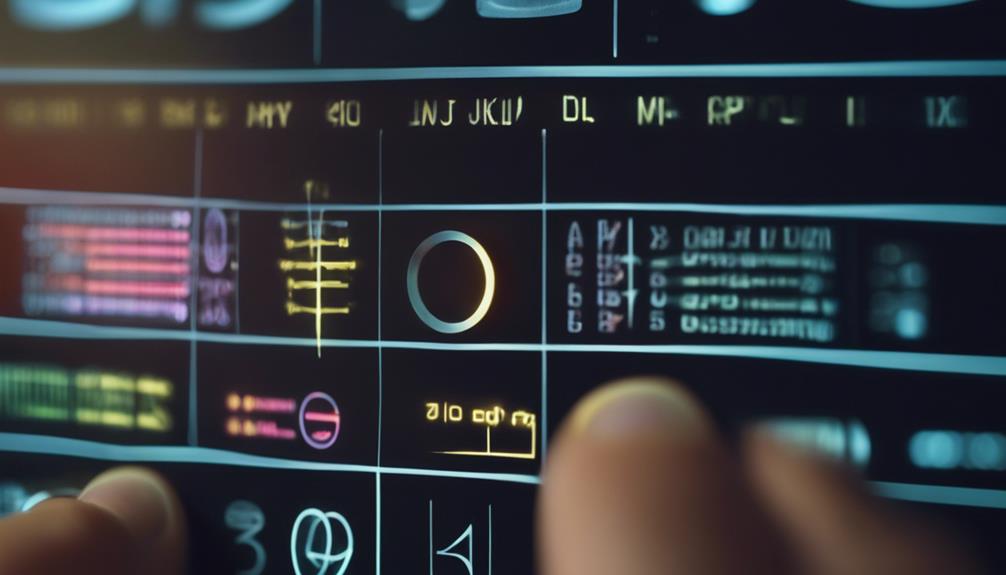
Adjusting the resolution settings on your source device is vital for achieving the best image quality from your projector. To start, make sure the resolution on your computer matches the projector's native resolution, which is typically 1024 x 768 for most projectors. Mismatched resolutions can lead to blurry images, so it's important to check this first.
You can access the screen resolution settings by right-clicking on your desktop and selecting "Display settings." If you're using a high-resolution projector, like the Cosmos Max 4K UHD, verify that your source device is set to a compatible input resolution to reveal peak image quality.
Don't hesitate to experiment with different resolution settings on your source device. This can help you find the best configuration that works well with both the projector and the content you're displaying.
Additionally, regularly checking and adjusting these resolution settings can prevent issues related to image shape and size, guaranteeing your projected content fits the screen perfectly. By taking these steps, you can enhance your viewing experience and enjoy clearer, sharper images.
Importance of Proper Focus

Achieving proper focus is imperative for delivering clear, sharp images that enhance your viewing experience. When the focus isn't set right, you'll notice significant blurriness that detracts from even the best content. Regularly adjusting the focus wheel or using remote control features can help maintain ideal clarity, especially after repositioning the projector.
It's critical to verify your projector lens is aligned correctly, as misalignment can lead to uneven focus across the screen. During your projector troubleshooting, check for any optical issues and correct the positioning if necessary. Relying too much on digital keystone correction can distort your images, so prioritize proper placement to enhance focus quality.
Another essential aspect is keeping the lens clean. Dust and smudges can severely impact image clarity and hinder effective focus adjustments. Make it a habit to regularly inspect and clean the lens to guarantee the best possible viewing experience.
Screen and Environmental Considerations

When you're setting up your projector, don't overlook the screen and the environment around it. A smooth, high-quality screen and managing ambient light can dramatically enhance image clarity and focus.
The type of screen you choose, whether fixed or retractable, plays a significant role in optimizing your viewing experience.
Additionally, using a projector maintenance tips approach to guarantee proper ventilation and cleanliness will further set the stage for a crisp and clear viewing experience.
Screen Surface Quality
The quality of your screen's surface plays an essential role in guaranteeing clear and vibrant images, as any wrinkles or imperfections can distort the projection considerably. A smooth, taut surface is vital for ideal screen surface quality; even minor flaws can compromise the overall projected image.
When using portable screens, make certain to fully extend and properly tension them to avoid sagging, which can lead to uneven image projection and focus issues.
Regularly inspect your screen for dust, damage, or imperfections. These can interfere with light reflection, resulting in a less clear image.
Additionally, verify that your projector is aligned correctly with the screen. Misalignment may cause trapezoidal distortion, making it difficult to achieve a sharp focus across the entire projected image.
Ambient Light Management
Managing ambient light effectively can drastically improve your projector's image quality by enhancing contrast and visibility. Proper control of lighting conditions is essential, as ambient light can considerably diminish clarity. Here are three key strategies to manage ambient light and enhance your viewing experience:
- Use Blackout Curtains: Install blackout curtains to block outside light sources, creating a darker environment for your projector screen. This helps improve contrast and overall image quality.
- Choose the Right Screen: Opt for a matte or high-gain projector screen. Matte screens reduce reflections, while high-gain surfaces reflect more light towards the audience, making images appear brighter in well-lit spaces.
- Maximize Screen Positioning: Position your projector screen at an ideal angle to minimize light spill. Confirm the projector is at an adequate distance from the screen to avoid distortion caused by excessive ambient light interference.
Maintenance Best Practices
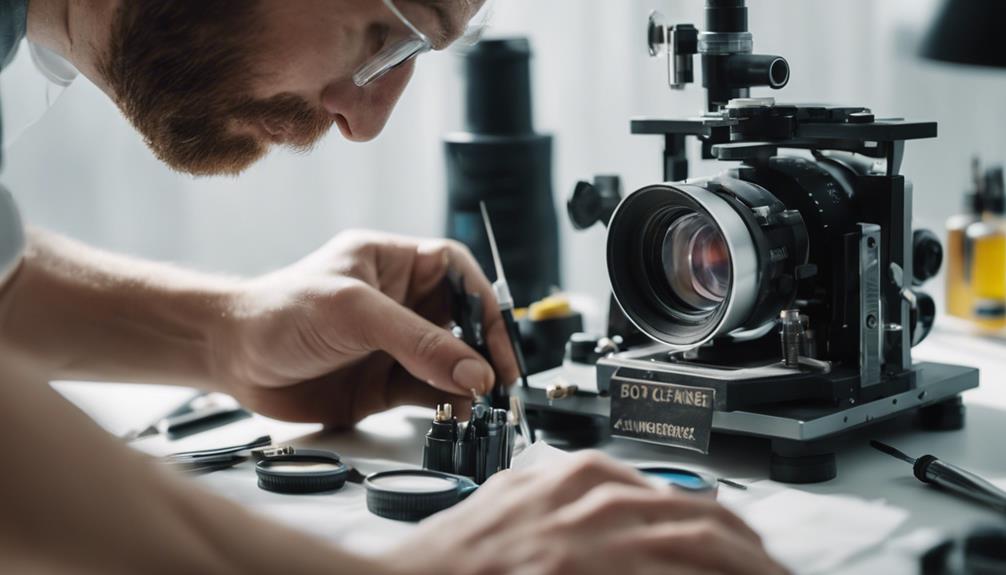
To keep your projector performing at its best, regularly clean the lens and check the air filters for dust buildup. This is one of the essential maintenance best practices you should follow.
Use a soft, lint-free microfiber cloth to wipe the lens, ensuring you remove any dust or smudges that could affect image clarity.
Don't forget to inspect the air filters and replace them as needed. Clogged filters can lead to overheating, which jeopardizes performance and shortens your projector's lifespan.
To further enhance performance, store your projector in a dust-free environment. This minimizes debris accumulation, allowing for ideal functioning.
Keeping the projector's firmware updated is also important; updates often include performance improvements and bug fixes that can enhance overall operation.
Troubleshooting Steps to Take
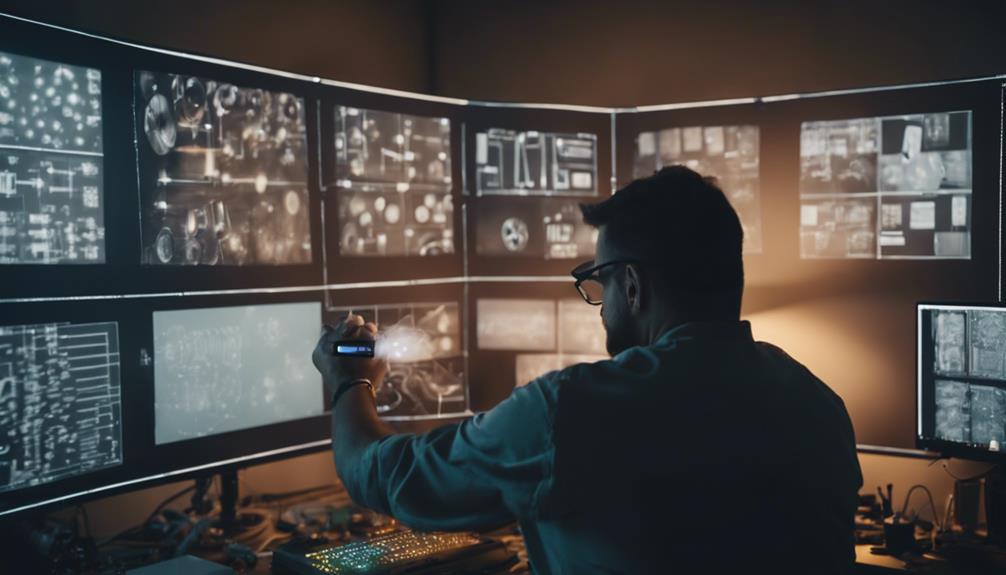
When you're facing focus issues with your projector, it's important to understand the common problems that could be at play.
You can take several adjustment techniques to tackle these issues effectively.
Let's explore the steps you can follow to improve your projector's focus quickly.
Common Focus Problems
Adjusting the focus dial on your projector's lens is often the first step to resolving blurry images and achieving a sharp, clear projection. If you're still experiencing focus issues after making adjustments, consider these common problems:
- Distance from Screen: Verify your projector is at the correct distance from the screen. Too much distance can lead to blurry images, especially in models that require precise placement for ideal focus.
- Lens Cleanliness: Regularly clean your projector lens with a microfiber cloth. Dust and smudges can greatly impact your focus quality, causing the projected image to appear blurry.
- Environmental Factors: Check the projection environment. Ambient light and irregularities on the screen surface can affect focus. Confirm you're projecting in a darkened room with a smooth surface for the best results.
Adjustment Techniques
Utilize the focus ring on your projector's lens for immediate adjustments, ensuring that the image sharpens with each small turn. This basic adjustment technique is essential for achieving the best focus quality. After making adjustments, always perform regular focus checks, especially if you've moved the projector.
Next, explore your projector's menu to enable sharpness enhancement features. Experiment with different projection modes, like cinema or presentation, to find the one that delivers ideal clarity for your content. Be mindful of keystone correction settings; excessive digital adjustments can distort images, so physically repositioning the projector may help minimize the need for these changes.
Verify that your projector is placed at the correct distance from the screen. Improper placement can lead to uneven focus across the image, which is frustrating to fix.
When to Seek Professional Help
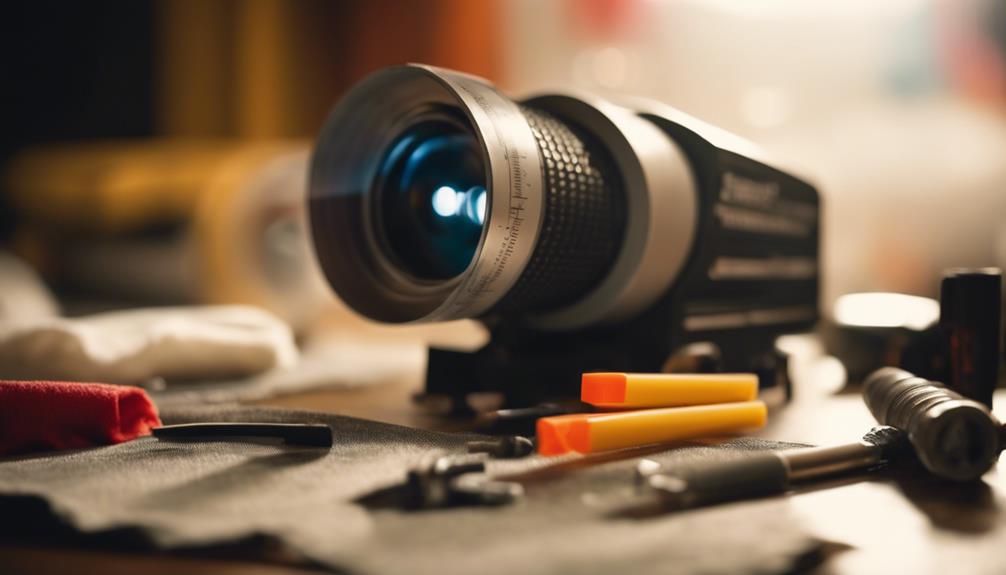
Persistent focus issues that don't improve with basic adjustments often signal it's time to seek professional help. If you've tried everything from adjusting the focus settings to recalibrating your projector's position and still face blurriness, it's wise to consult an expert.
Here are three key indicators that you should reach out for professional assistance:
- Unresolved Blurriness: If the image remains consistently blurry despite your efforts, there could be underlying hardware issues.
- Signs of Hardware Malfunction: Unusual noises, overheating, or any other strange behaviors can indicate serious problems that require a technician's expertise.
- Warranty Considerations: If your projector is still under warranty, contact the manufacturer or an authorized service center for inspection and repair options.
Don't forget to document all troubleshooting steps you've taken and any symptoms you've observed. This information will help the technician diagnose the issue more effectively.
Frequently Asked Questions
Why Is My Projector Not Focusing?
Your projector might not be focusing due to lens misalignment, dust on the lens, or incorrect positioning. Try cleaning the lens, adjusting the focus wheel, or repositioning the projector for clearer images.
How Can I Improve My Projector Focus?
To improve your projector's focus, regularly clean the lens, adjust the focus wheel, guarantee proper alignment with the screen, match resolutions, and test various surfaces. These steps will considerably enhance your viewing experience.
Why Is My Projector Out of Focus on One Side?
Your projector might be experiencing a slight optical misalignment, causing one side to appear less sharp. It's often due to placement or lens tilt. Consider adjusting its position or consulting a professional for assistance.
How Do You Troubleshoot a Projector Problem?
To troubleshoot a projector problem, check the power supply and connections, adjust settings like resolution, inspect the lens for dirt, and restart the devices. You'll often resolve issues with these straightforward steps.
Conclusion
In the world of projectors, achieving that crisp, clear image is like painting a masterpiece; every detail counts.
By understanding the common causes of blurriness and adjusting your settings, you can transform your viewing experience.
Remember, a well-maintained projector is like a finely tuned instrument, ready to deliver vibrant visuals.
If you've tried everything and the image still feels hazy, don't hesitate to reach out for professional help—sometimes, a fresh pair of eyes can work wonders.
Hello, I’m Art, and I’m excited to be a part of the 1Home Theatre Projector team. As a writer, I’m here to contribute my knowledge and insights to help you achieve the ultimate home cinema experience. I understand that making decisions in the world of home entertainment can be complex, and I’m here to simplify the process for you.
